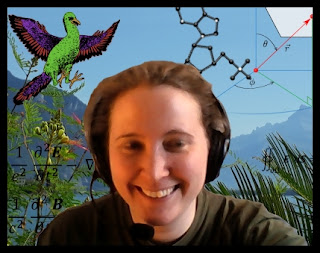Quotable: Vivaldi, Michael Talbot and Suffering for Art
Good morning!
Following last week's musical theme, this week's quotes are on geniuses suffering for their art...
I don't personally buy into the doctrine that all great art comes from suffering- at least not directly.
(It may be that a greater-than-average dollop of suffering shapes the minds of a genius through a biological meachnism. Or it may be that for some great minds suffering is needed to fulfil their potential because someone who is truly happy with who they are and where and what they are has no need to put in the 10,000 hours of practice sometimes said to be needed to master a subject; no need to acquire the background and knowledge base upon which some types of genius draw.)
Be that as it may, Mozart and Vivaldi both suffered to a degree for and during their work; here is Michael Talbot on Vivaldi-
Following last week's musical theme, this week's quotes are on geniuses suffering for their art...
I don't personally buy into the doctrine that all great art comes from suffering- at least not directly.
(It may be that a greater-than-average dollop of suffering shapes the minds of a genius through a biological meachnism. Or it may be that for some great minds suffering is needed to fulfil their potential because someone who is truly happy with who they are and where and what they are has no need to put in the 10,000 hours of practice sometimes said to be needed to master a subject; no need to acquire the background and knowledge base upon which some types of genius draw.)
Be that as it may, Mozart and Vivaldi both suffered to a degree for and during their work; here is Michael Talbot on Vivaldi-
"We will understand Vivaldi better if we remember that he was a lifelong invalid [with asthma severe enough to restrict his ability to walk] who refused a sedentary existence, whether physical or psychical [sic]. His ambition, his brazen self-confidence, his self pity whenever his plans went awry...all stemmed from a repressed insecurity born of a bodily ailment"
- Michael Talbot, https://tinyurl.com/yb4511g
Mozart famously suffered physical and mental exhaustion from overwork, but, as he writes in this extract from a letter to his father, sometimes his suffering was more immediate and practical-
"I can't write much because writing so many parts of the opera has made my fingers painful"
-W. A. Mozart, in a letter to Leopold Mozart, 1770
There is something endearingly human about the idea of Mozart having sore fingers from writing "too many notes". It reminds me of the first time I saw an early draft of Albert Einstein's "General Theory of Relativity": (picture below). Somehow, seeing a piece of paper full of corrections and crossings out makes Einstein a human being, rather than an unrelatable man of unimaginable genius and all the more loveable for it.
Next post will be on Friday,
Hope to see you then,
Victoria.
Hope to see you then,
Victoria.


Good thing Mary Kondo wasn't around in Einstein's time or we'd only be left with his tidy notebooks :D
ReplyDeleteBack in the day, asthma was such a major disability. It is easy to forget. Before people had modern medicines, the best you could do was smoke "asthmatic cigarettes". Can you imagine!!
ReplyDeleteTo see works by Albert Einstein like this in a museum is a great privilege. How splendid to see the exact paper and the handwritings of Professor Einstein. Even if we see this only under a glass case when visiting.
ReplyDeleteThank you for your comments, Carmen, Linda and Kenji.
ReplyDeleteYes, Linda, it sounds crazy now. That said, the cigarettes were not tobacco cigarettes as we now think of them, but laced with muscle relaxants like Atropine/belladonna and Datura sp. I have a reference for that somewhere, but it is in a toxicology textbook so I cannot link to it when I find it, anyway- these internet articles on the subject are quite fun, though-
http://thequackdoctor.com/index.php/victorian-asthma-cigarettes-who-was-dr-batty/
http://asthmatreatment2.blogspot.com/2013/09/1800-1985-asthma-cigarettes.html
In any case, I think it is good for all concerned that "we" have moved on to Ventolin/Salbutamol, Atravent, Salmeterol etc. these days....
Carmen, there's a great quote by Freddie Mercury (related in either the biography by Peter Freestone or that by Jim Hutton) about one of his more clumsy house cleaners- basically saying if she'd been employed by Louis XIVth, there wouldn't be any antiques left! You could say something similar about Marie Kondo and the general detritus and rough notes piles that most scientists and writers produce.
Yes, Kenji, it is fascinating to see the original writing and notes of the notable and famous. One of London's art museums had an exhibition of Van Gogh's private letters alongside the pictures to which they referred a few years back; I thought it gave a great insight into the man (writing fluently in multiple languages) behind the work. There is something very intimate and personal about someone's handwriting.